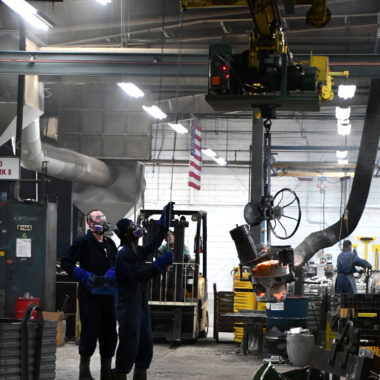Understanding Aluminum Casting: Proven Techniques to Enhance Manufacturing Effectiveness
Understanding Aluminum Casting: Proven Techniques to Enhance Manufacturing Effectiveness
Blog Article
Study the World of Aluminum Spreading: Understanding the Different Methods
Aluminum casting is an essential procedure in the manufacturing market, with numerous techniques utilized to produce intricate and accurate elements. From the typical sand casting method to the sophisticated die casting procedure, each method provides special benefits depending on the requirements of the job.
Sand Casting Approach
Sand spreading, a widely-used approach in light weight aluminum casting procedures, involves creating molds made from compacted sand for putting liquified steel. This method is affordable and very flexible, making it a preferred option for numerous sectors. The process starts with the development of a pattern, commonly made of timber or steel, which is then pushed into the sand to leave an impact. The sand blend, commonly silica sand mixed with a binder like clay, is tightly packed around the pattern to develop a mold tooth cavity. Once the mold and mildew is ready, it is firmly positioned in a flask and molten aluminum is put right into the tooth cavity.
After the steel has cooled down and solidified, the sand mold and mildew is escaped to reveal the aluminum casting. Sand casting permits the production of complex shapes and big components that may be difficult or costly to create using various other methods. It is also a sustainable strategy as the sand can be recycled and made use of multiple times, minimizing waste in the casting procedure.
Permanent Mold And Mildew Technique

One significant advantage of the Permanent Mold And Mildew Technique is the enhanced dimensional accuracy it offers. The steel mold and mildew allows for tighter resistances and better details in the final aluminum spreadings compared to sand casting approaches. This accuracy makes it a recommended choice for applications where limited dimensional control is vital, such as in the automobile and aerospace sectors.

Pass Away Casting Process

Financial Investment Casting Technique
Using a precision casting technique, Investment Casting Method involves developing elaborate aluminum parts by putting molten metal into a ceramic mold and mildew. This procedure, likewise understood as lost-wax casting, starts with the development of a wax pattern of the wanted component (aluminum casting).
The next action involves pouring the molten light weight aluminum right into the ceramic mold and mildew. The light weight aluminum loads the tooth cavity left by the wax pattern, taking its shape exactly. This technique is favored for its capability to produce complex shapes with high precision and a smooth surface area coating. Investment spreading is commonly made use of for making components in sectors where intricate styles and tight resistances are needed, such as aerospace, vehicle, and medical equipment. The convenience and accuracy of the More hints Financial investment Casting Strategy make it a beneficial method in the world of light weight aluminum casting.
Lost Foam Casting Method
Having checked out the intricate accuracy of Investment Casting Approach, the emphasis currently moves to the cutting-edge method of Lost Foam Casting in light weight aluminum part manufacturing. Lost Foam Casting, likewise understood as evaporative pattern casting, is a contemporary method where a foam pattern of the wanted part is produced and after that coated with a refractory material.
Additionally, Lost Foam Casting is a cost-effective process as it decreases the demand for cores and enables for the manufacturing of light-weight elements. Regardless of its advantages, Lost Foam Spreading needs careful control of the casting procedure to avoid defects and ensure high quality components.
Conclusion
Finally, light weight aluminum spreading supplies a variety of approaches such as sand casting, permanent mold and mildew technique, pass away spreading, financial investment spreading, and lost foam casting. Each technique has its own benefits and applications, making light weight aluminum casting a flexible and commonly used procedure in different industries. Recognizing the differences between these methods is vital in picking one of the most ideal spreading method for specific manufacturing requirements.
Sand spreading, a widely-used technique in light weight aluminum casting processes, involves producing molds made of compacted sand for putting molten steel. aluminum casting.The Permanent Mold Method, like sand casting, is one more widespread technique utilized in light weight aluminum spreading procedures, using distinct benefits in terms of mold and mildew reusability and dimensional accuracy. The steel mold and mildew permits for tighter resistances and better information in the final aluminum castings contrasted to sand casting approaches. The two primary kinds of die casting are cool chamber die spreading and warm chamber pass away spreading, each ideal for different types of aluminum alloys.In conclusion, light weight aluminum spreading uses a range of techniques such as sand casting, permanent mold weblink and mildew technique, die casting, financial investment casting, and shed foam spreading
Report this page